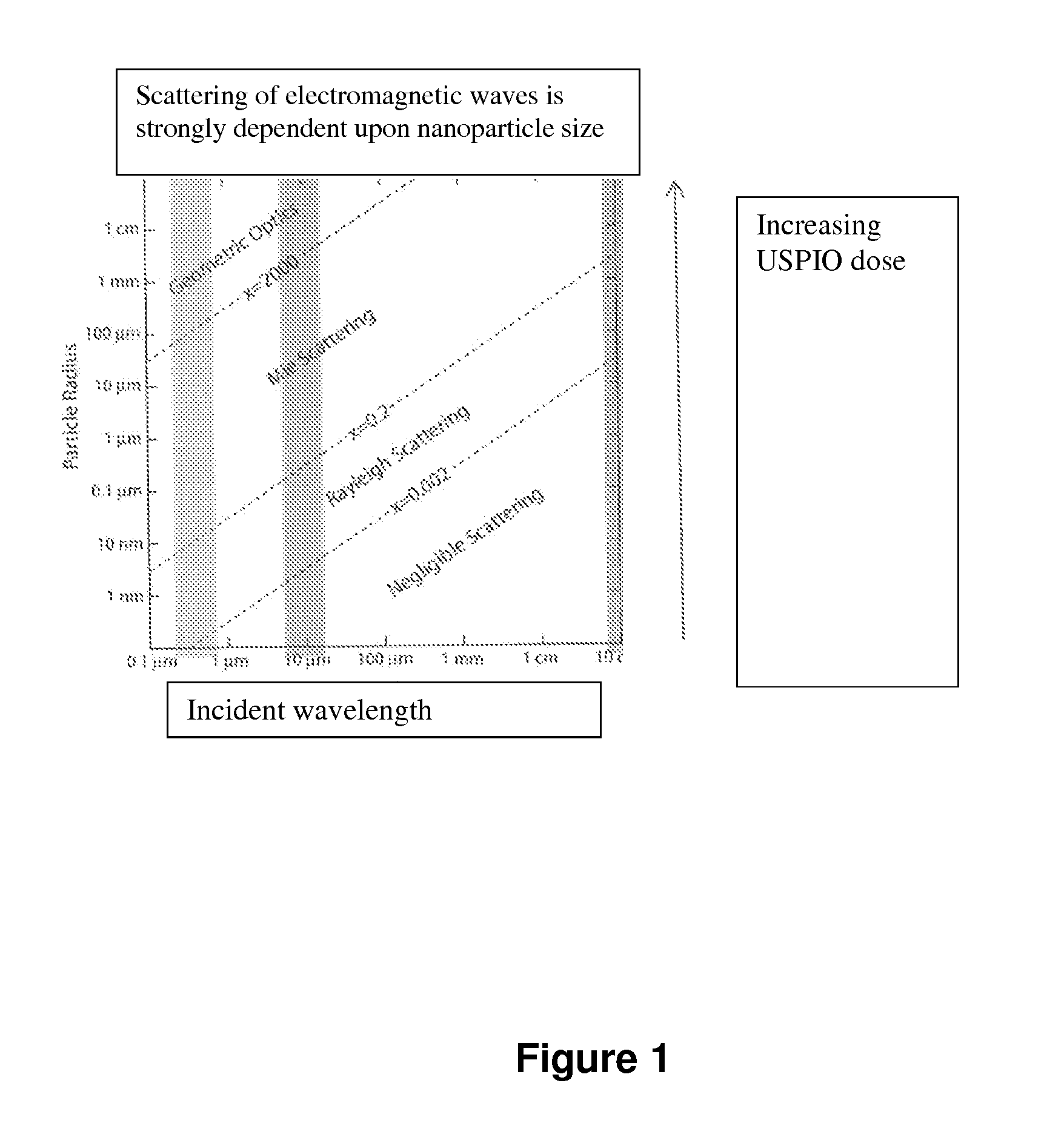Theranosis of macrophage-associated diseases with ultrasmall superparamagnetic iron oxide nanoparticles (USPIO)
a superparamagnetic iron oxide and macrophage technology, applied in biocide, diagnostics, diagnostic recording/measuring, etc., can solve the problems of inefficient contrast agents at wavelengths used, inaccurate diagnosis and selective therapy of inflammatory diseases, and uspio nanoparticles of about 25 nm would be relatively inefficient contrast agents, etc., to achieve enhanced capillary permeability, facilitate extravasation, and suit the effect of siz
- Summary
- Abstract
- Description
- Claims
- Application Information
AI Technical Summary
Benefits of technology
Problems solved by technology
Method used
Image
Examples
example 1
Experiments Assessing Macrophage Loading
[0268]Extensive preclinical research on a representative USPIO, ferumoxtran-10, shows the broad range of macrophage loading feasible in mammals. Intravenous doses ranging from 2-400 mg Fe / kg in rats and dogs show no significant adverse effects. Bourrinet (supra). These doses of ferumoxtran-10 are cleared from the blood by body macrophages within 24 hours. Any of the tissues with fixed macrophages could be used to determine the detection characteristics of USPIOs when they are aggregated in macrophages, using ultrasound or optical coherence imaging devices.
[0269]One particularly useful method uses percutaneous administration into the subcutaneous tissue on the dorsum of the foot in rabbits or rats see Wolf (Acad. Radiol., 6(1):55-60, 1999, incorporated herein by reference). Percutaneous lymphography relies upon the access of nanoparticles through the clefts in the terminal lymphatics. These single celled vessels are tethered to the surrounding ...
example 2
Detection Sensitivity with Ultrasound (Macrophage-Enhanced Lymph Nodes: Method for Comparing the Imaging Detection and Characterization)
[0271]The rat or rabbit is injected with a challenge subcutaneous dose of USPIO, the injection site is gently massaged for 15 minutes, and then the animal is anesthetized for evaluation at an appropriate experimental time post injection. It is possible to use comparison substances injected in the same manner in the opposite hind paw.
[0272]The dose of UPSIO can be an experimental variable as well as the time after injection. These experiments allow the creation of loaded nodal macrophages where accumulation, retention, and metabolism can be evaluated. The experimental animals can be studied with any ultrasound device wherein ultrasound frequency, detection of backscatter, probe design, or other variable can be studied to determine detection parameters. Qualitative, semi-quantitative, or quantitative response can be obtained in reference to the in viv...
example 3
Detection Sensitivity with Optical Coherence Tomography
[0275]Using the methods above, OCT device variables and their detection sensitivity can be determined. The draining node in these animals is close to the surface, but surgical exposure can be used when experimentally appropriate.
PUM
 Login to View More
Login to View More Abstract
Description
Claims
Application Information
 Login to View More
Login to View More - R&D
- Intellectual Property
- Life Sciences
- Materials
- Tech Scout
- Unparalleled Data Quality
- Higher Quality Content
- 60% Fewer Hallucinations
Browse by: Latest US Patents, China's latest patents, Technical Efficacy Thesaurus, Application Domain, Technology Topic, Popular Technical Reports.
© 2025 PatSnap. All rights reserved.Legal|Privacy policy|Modern Slavery Act Transparency Statement|Sitemap|About US| Contact US: help@patsnap.com


